Is Tokyo’s Samurai Training class truly a culture or just a tourist trap disguised as an authentic experience?
While the allure of wielding a samurai sword and learning ancient techniques may seem captivating, the reality behind the scenes may surprise participants.
The journey into the world of the samurai goes beyond mere physical prowess, raising questions about the ethical implications of commercializing a sacred tradition.
As participants step into the dojo, they may find themselves grappling with the dichotomy between preserving history and exploiting it for profit.
Just The Basics
- Authentic Samurai training in a real dojo setting
- Experience adrenaline with real sword techniques
- Immerse in ancient samurai culture with expert guidance
- Learn correct techniques and history in a small group
Here's some other great tours and experiences nearby we think you'll like.
Activity Details
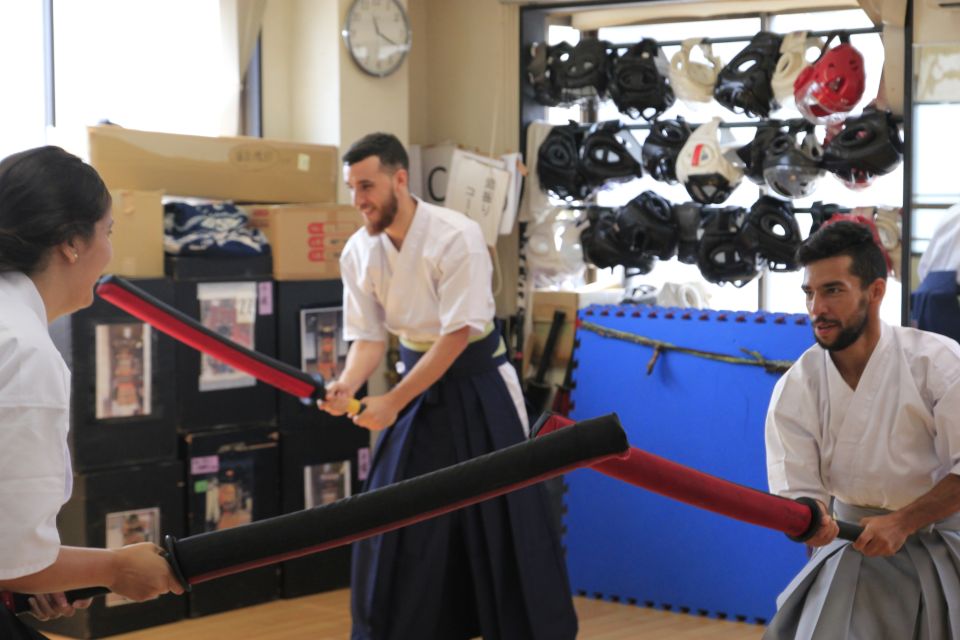
When considering the details of the Samurai Training experience in Tokyo, participants can benefit from the flexibility offered, including free cancellation up to 24 hours in advance and the convenience of reserving now and paying later for a seamless travel experience.
The duration flexibility of the 2-hour class allows for a concise yet immersive experience, catering to the time constraints of modern travelers. On top of that, the availability of an instructor who speaks both Japanese and English ensures that language options aren’t a barrier to understanding the intricate techniques and historical significance of the training.
This bilingual approach enhances the accessibility of the class, making it inclusive for a diverse range of participants seeking to explore the world of the samurai.
Samurai Training Experience
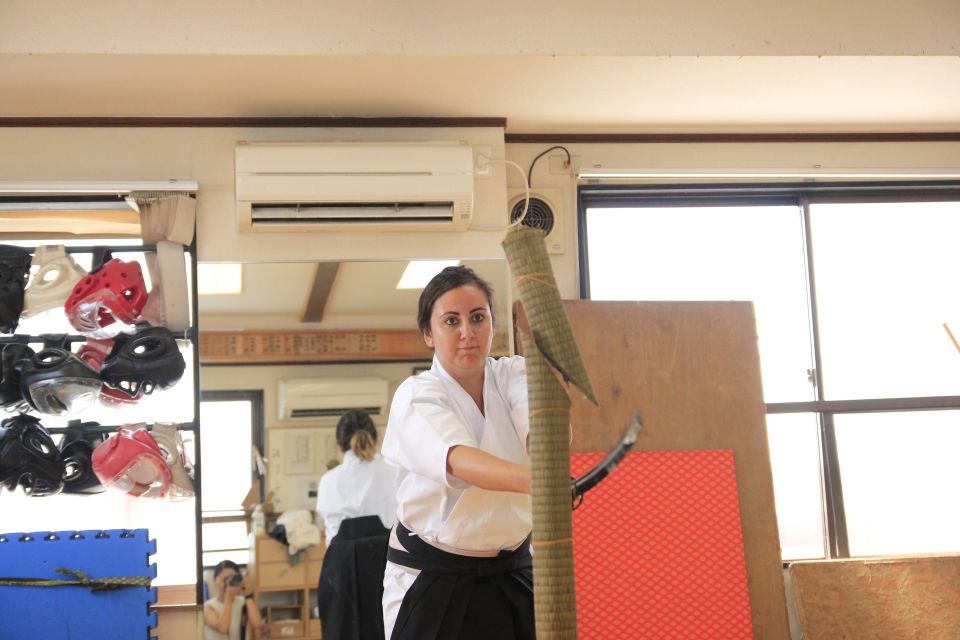
Transitioning from understanding the flexible logistics of the Samurai Training experience, participants are poised to enjoy an adrenaline-fueled journey through authentic samurai techniques and culture in Tokyo.
- Cultural Immersion: Engage deeply with the ancient samurai culture at a real dojo.
- Martial Arts Techniques: Experience an adrenaline rush by slicing two poles with a real samurai sword.
- Iai Lesson: Learn correct techniques using a practice sword.
- Proper Attire: Wear suitable training clothes for the full immersion experience.
- Combat Strategy: Gain insights into maintaining distance from opponents for effective martial arts practice.
Full Description of Class
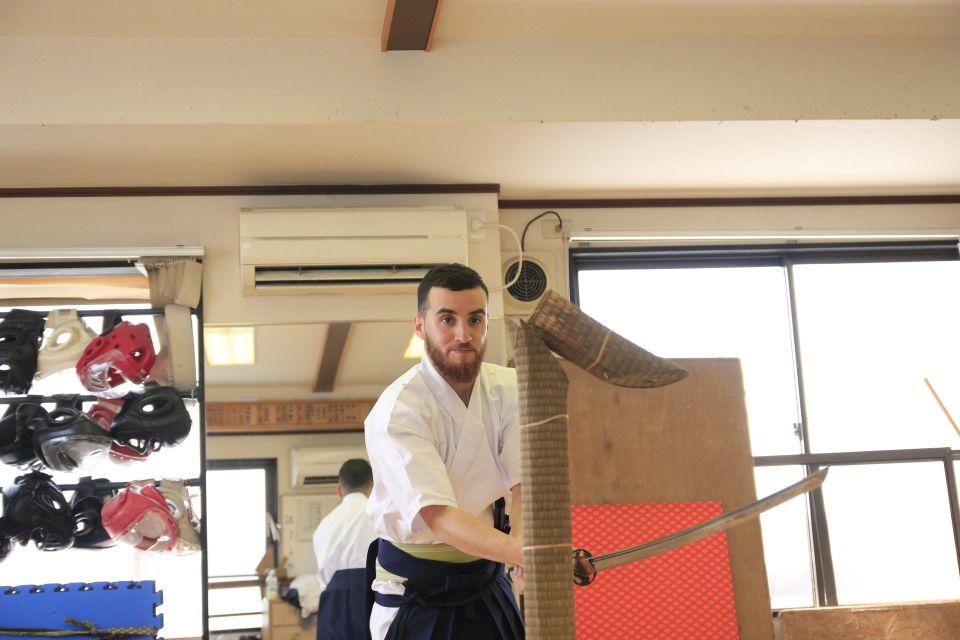
Explore an authentic Samurai training experience at a real dojo with a three-part class encompassing Iai, kendo (gekken), and test cutting sessions. Students will engage in a short lecture before changing into traditional training attire, seeing the ancient art of the samurai. The class focuses on honing class techniques through sparring with practice swords and mastering the art of cutting two poles with an authentic katana. Located at Toyama-ryu Bizen-kai, just a 10-minute walk from JR Machida Station, you will experience firsthand the discipline and precision required in samurai training. This hands-on approach ensures a deep level of training immersion, allowing individuals to truly grasp the essence of this historical martial art.
| Class Techniques | Training Immersion |
|---|---|
| Correct sword techniques | Immerse in ancient culture |
| Spar with practice sword | Hands-on learning experience |
| Test cutting proficiency | Authentic dojo environment |
| Focus on precision | Deep dive into samurai methods |
| Traditional attire | Realistic training scenarios |
Important Information for Participants
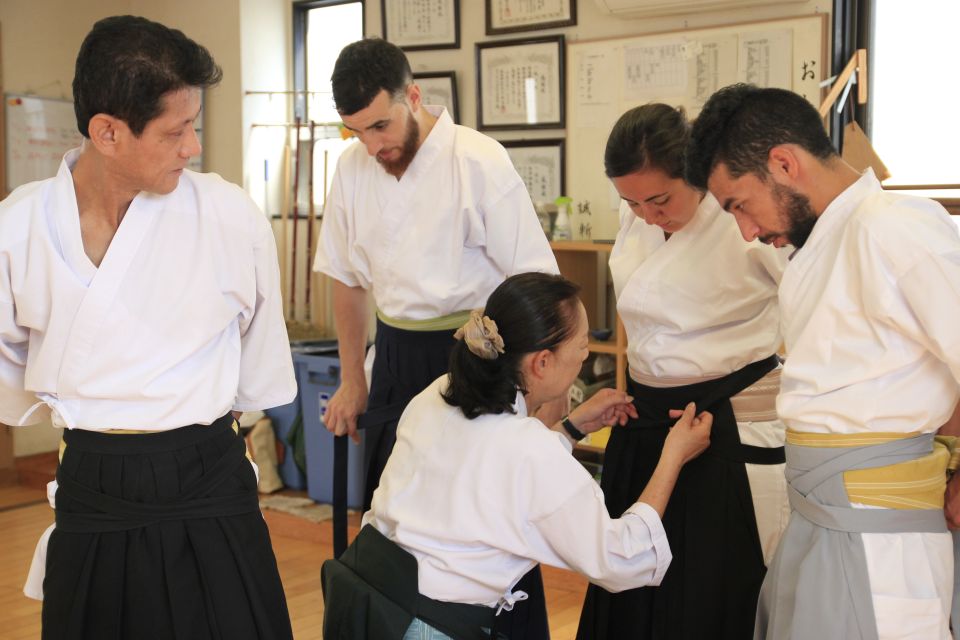
Participants must bring their own drinks and a camera for the Samurai training experience in Tokyo. It’s essential to note the following important information to ensure a smooth and enjoyable experience:
- Parental permission: Children under 18 can participate with the consent of their parents or legal guardians.
- Practice uniform restrictions: Provide accurate height and weight details to ensure the proper fitting of the practice uniform.
- Notify the provider in advance for groups larger than 5, as they can accommodate up to 10 participants.
- Prohibited items during the training include alcohol and drugs.
Remember to adhere to these guidelines to make the most of the authentic Samurai training experience.
Media Coverage and Filming Guidelines
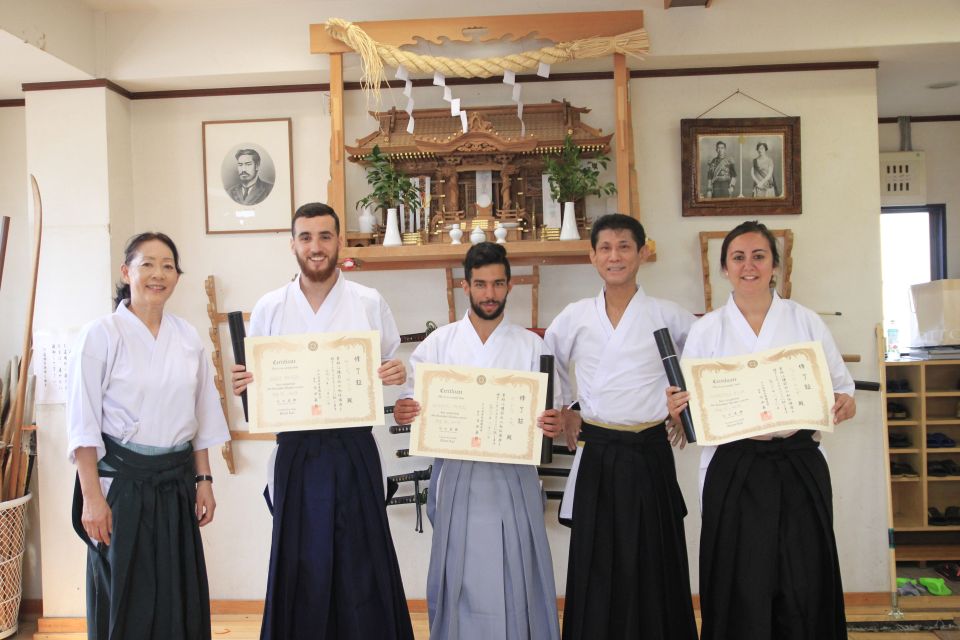
The guidelines for media coverage and filming at the Samurai Training Experience in Tokyo provide valuable insight into capturing and sharing the essence of this unique culture. Media etiquette is paramount, allowing participants to document their experience through personal photos and videos.
However, it’s essential to inform in advance if the content will be used for news or social media. Filming etiquette suggests requesting the charter room with advance notice to avoid inconveniencing other participants. Day-of filming requests may not be accommodated, emphasizing the importance of planning ahead for any media coverage.
Directions to the Dojo
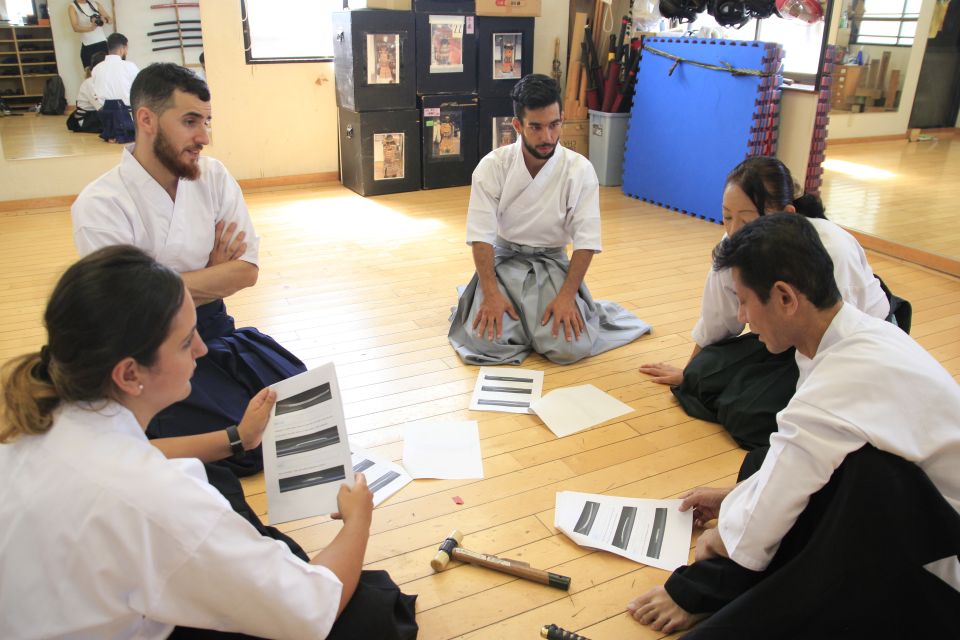
Navigating the streets of Tokyo to find the Toyama-ryu Bizen-kai dojo from JR Machida Station can be a rewarding adventure for those seeking an authentic Samurai training experience. The journey toward the dojo fosters a sense of culture and respect for martial arts traditions. Here are some directions to guide you on this enlightening path:
- Exit JR Machida Station and head east.
- Turn left onto the main street and continue straight for about 500 meters.
- Look for the traditional red gate marking the entrance to the dojo.
- Enter the sacred grounds and prepare to explore the world of the samurai.
- Embrace the spirit of the warriors as you embark on this transformative experience.
Safety Precautions and Equipment
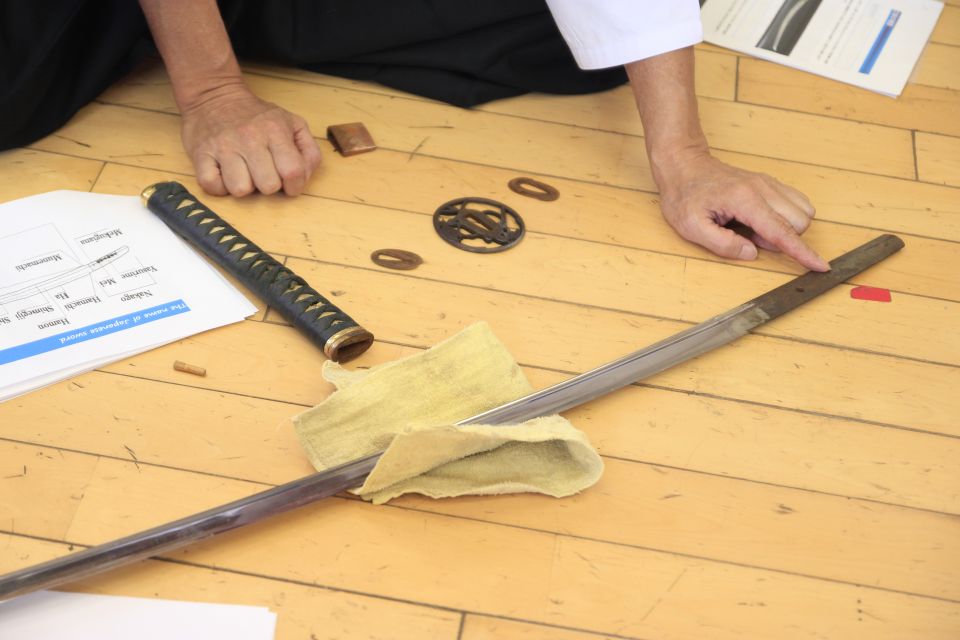
When engaging in Samurai training at the Toyama-ryu Bizen-kai dojo, prioritizing safety measures and selecting the appropriate equipment are essential for a successful and enriching experience. Participants are required to wear proper safety gear and use the necessary equipment to ensure their well-being during the intense training sessions. Understanding the correct training techniques and adhering to safety protocols not only enhances the learning experience but also prevents any potential injuries. Below is a table outlining the essential safety gear and equipment needed for Samurai training:
| Safety Gear | Training Techniques | Equipment |
|---|---|---|
| Protective gloves | Correct sword handling | Samurai sword |
| Headgear | Distance management | Practice sword |
| Body armor | Defensive postures | Wooden poles |
Booking and Reservation Details
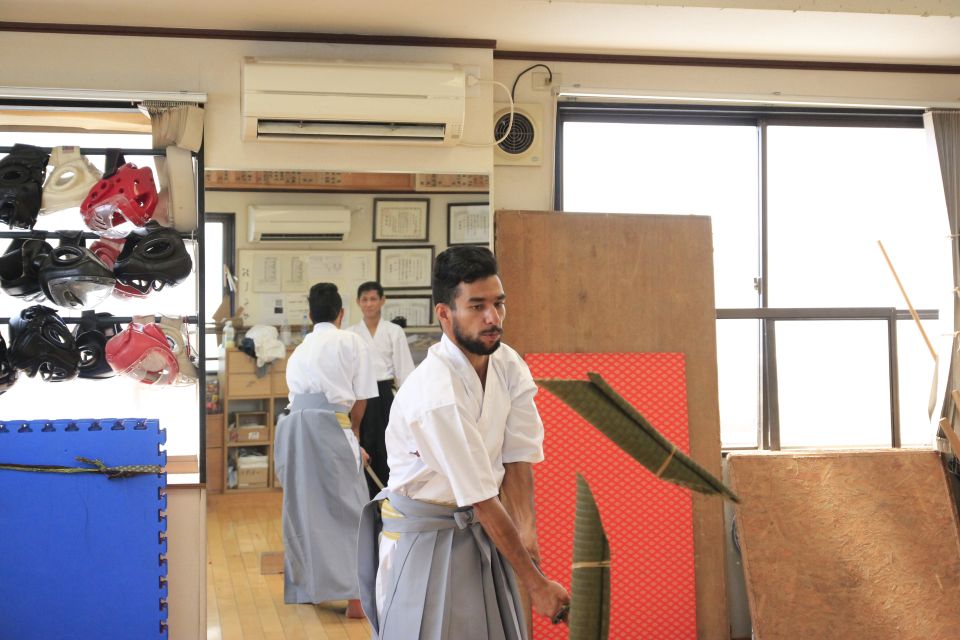
To secure a spot for the authentic Samurai training experience in Tokyo, visitors can complete the reservation process online or through direct contact with the provider. Payment options include reserving now and paying later for flexible travel plans.
The cancellation policy allows for free cancellation up to 24 hours in advance for a full refund. Group size limitations ensure an intimate experience, with small groups limited to 5 participants. For larger groups, up to 10 participants can be accommodated with prior notification.
This structured approach to booking and reservation details give you participants with a seamless and enjoyable experience, while also ensuring the quality and authenticity of the Samurai training class.
Frequently Asked Questions

Can Participants Bring Their Own Samurai Swords to the Training Session?
When participants attend the samurai training session, they should adhere to sword etiquette by avoiding bringing personal samurai swords. This ensures a focus on mastering training techniques with the provided equipment, enhancing the authentic experience.
Are There Any Age Restrictions for Participating in the Samurai Training Experience?
Age restrictions for the Samurai Training Experience are important for safety and skill development. Participants under 18 can join with parental consent. Understanding age limitations enhances the training environment, ensuring appropriate engagement and supervision during the session.
Is Previous Martial Arts Experience Required to Join the Class?
Previous martial arts experience is not required for the beginner-friendly Samurai training class. Participants of all experience levels can enjoy learning opportunities. The class offers a chance to immerse in an ancient culture and develop new skills.
Are Spectators Allowed to Watch the Training Session?
Spectators are not allowed to watch the training session as it focuses on training etiquette and culture. This approach enhances the participants’ learning experience by maintaining the authenticity and integrity of the samurai training environment.
Are There Any Souvenir or Merchandise Options Available for Purchase at the Dojo?
When visiting the dojo, participants can explore gift options, training gear, cultural souvenirs, and exclusive merchandise. These items provide a tangible connection to the authentic samurai training experience, making for memorable keepsakes.
Final Words
To sum it up, the Samurai Training class in Tokyo offers a truly immersive and authentic experience for those seeking to explore Japan’s rich cultural heritage.
From wielding a real samurai sword to mastering traditional techniques, participants are transported into the world of ancient warriors with the guidance of a bilingual instructor.
This hands-on journey not only provides a thrilling adventure but also a deeper understanding of the revered traditions of the samurai.
